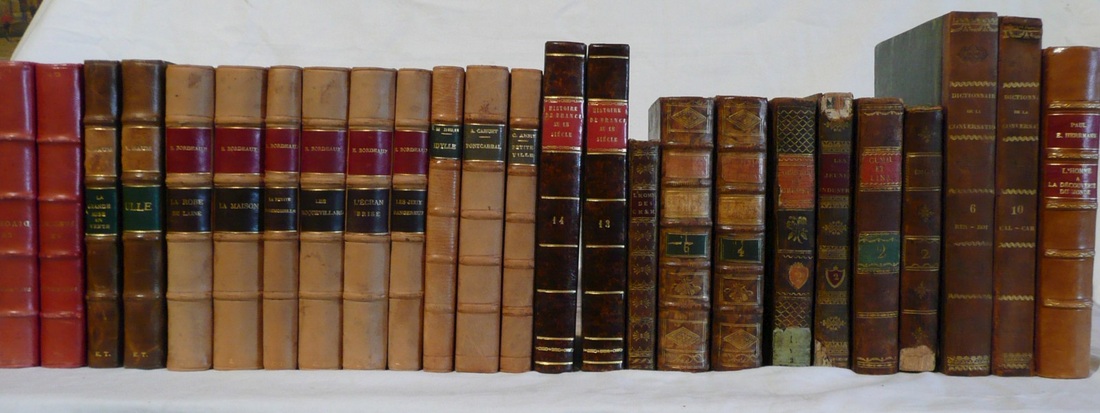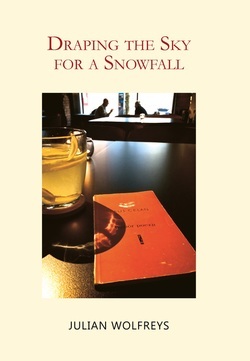Place Time Continuum
It's both obvious - and we also regularly forget - that places, like people, are layered. They are laid down like strata in the rock - layer upon layer of experience, quiet, events, excitement, stillness, sleep, waking, loss, love. This layering has many implications. In Draping the Sky for a Snowfall, Professor Julian Wolfreys offers a collection of poems (verso) with a series of essays, reflections, acute ramblings and extrapolations (recto). One such spread features the following poem (Sun Wan Sky Wasted) and short essay (Place), which expand on this idea of space and time intermingling: References: Julian Wolfreys: Draping the Sky for a Snowfall |
Explore |
|
SUN WAN SKY WASTED
It was late autumn; sun wan sky wasted day. A figure coming into view, from out Knowles Copse, The bay behind, horseshoe shod, A susurration stirring in the marshes A tall figure, a player of strings, A weaver of wool, and songs, And stories tripping tongue laughingly along; A cellist with a butterfly net That October afternoon heading home Skin, light-henna brown, nutmeg soft and furred, All but imperceptible, but giving to the touch She would sing, regardless of the world, Seasonal counterpoints, of rosebuds in June The times of year all contretemps, As, widdershins, she turned, dancing, To the rhythm of her own melodic lilt and lay. I saw that. Once. I see it now, once more Again I see her laughter’s ripple Unselfconscious on the air, A sound thin threaded with ale and wine, Cheese and apples on the tongue Spittle shared, and closer than myself I taste again the absence of a heart Unadorned and bared to all the world, Defiant of mortality. |
PLACE
Each place has its own time. Gathering time into it, the identity of place is assumed over time, as each successive epoch gives way to another, without being wholly erased in the process. So, one location may contain more than a millennium in its existence. What the eye sees is thus more than what is present, more than what is visible. For what is seen in the present has been determined by successive instances of transformation in each and every past, then and now perceived, felt, though not wholly apprehended. One looks unseeing onto the past in the field of vision, within which are memory’s invisibles. There has been a Knowles Farm for several centuries. The buildings surviving date from the 17th century. They reflect a polyfocal distribution pattern typical for the time; and equally typically for the area, the house has a stone and thatch lobby. Away from the farm, toward the bay, sloping toward Brading Marshes and Bembridge Lagoons, Knowles Copse remains, a distinctive feature, with noticeable groupings of silver leaved poplars, which would have been visible from the train, when the branch line reached its terminus on Station Road, adjacent to the harbour. South of Embankment Roads, the copse is what remains of a prehistoric woodland. To the west of the copse, beyond the farm, is Bembridge Windmill. Built around the beginning of the eighteenth century, it was, and remains, known by some as Knowles Windmill, although owned and operated by the Dennetts. J. M. W. Turner painted the four-storey structure in 1795. The mill’s wooden cap could be turned on a continuous chain, in order that the sails might be turned to face into the wind. Widdershins: an old word, barely used, though associated with Scots dialect. As with landscapes, its history is encrypted; arriving from another tongue early in the sixteenth century, and another age, its source Middle High German, meaning ‘against’ (wider) and ‘direction’ (sin). Alternatively, the German source might be widersinnig, translatable as ‘against sense’. The motion it names is counter-clockwise, a course contrary to the movement of the sun. Language may indeed work ‘against sense’, it is not always the function of language to convey meaning unequivocally. Even in those places where the signification seems apparent, transparent, without explanation, so there may be within, underneath the skin of that word, the tongue of the other articulating in a whisper, barely that, a sense that goes against the commonly accepted sense. |


